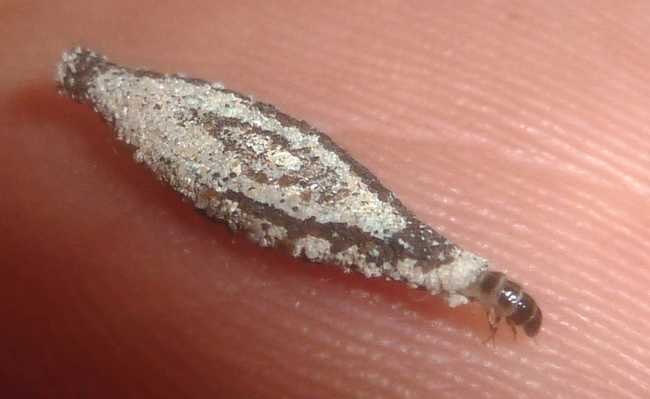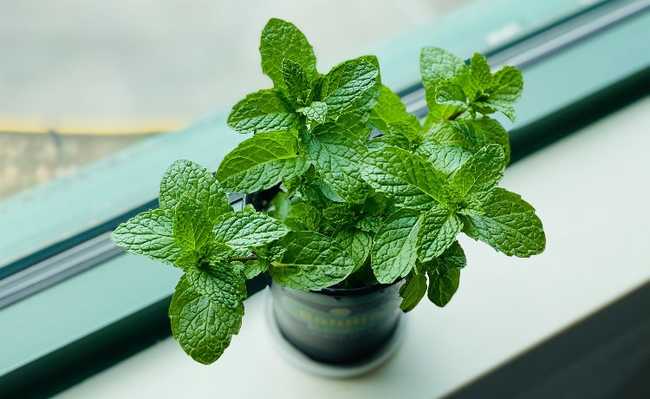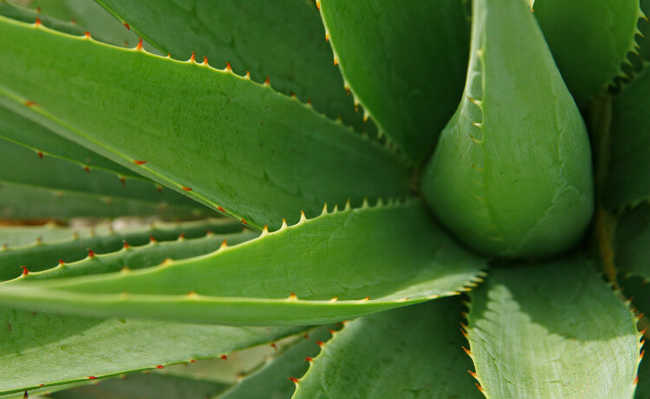Know what synanthropic animals are and how to avoid them
Synanthropic animals are those that have adapted to live together with humans, despite our will

Image: Zdeněk Macháček and Mikhail Vasilyev on Unsplash
The term "synanthropic animals" is used to refer to species that have adapted to live together with humans, despite our will, such as pigeons, rats, mosquitoes and even bees. Some synanthropic animals can transmit disease and harm the health of humans and other animals.
The disorderly growth of cities, the invasion of green areas and conurbation are phenomena that have helped these animals to adapt to living in urban areas. In some cases, living with these animals can generate discomfort and risks to public health, but there are also possibilities for living together, as in the case of bees and ants.
The four "As"
Synanthropic animals need water, food, shelter and access for their survival. Although water is not a limiting factor in urban areas, we can interfere with other factors so that undesirable species do not settle around us. Therefore, it is important to know what serves as food, shelter and access for each species to be controlled, and to adopt the necessary preventive measures, maintaining healthier environments and avoiding the use of harmful chemicals, which by themselves will not prevent new infestations.
Examples of synanthropic animals
Mice

Image: Zdeněk Macháček on Unsplash
Rats are nocturnal animals that live mainly in household waste. These synanthropic animals have the ability to metabolize different food classes and can consume products of animal and vegetable origin. In addition, they have a refined sense of smell and taste that help you choose the foods you prefer.
In urban areas, there are three species of rats:
- Rattus norvegicus: Known as the rat or sewer rat, it is the largest of the three species. They shelter in burrows, vacant lots, stream banks, dumps, sewer systems and manholes.
- rattus rattus: known as roof rat, liner rat or black rat, it is characterized by having large ears and long tail. The species usually inhabits high places such as attics, ceilings and warehouses.
- Mus musculus: popularly called mouse, has the smallest size among the three urban species. Habitually indoors, they usually make their nests inside cupboards, stoves and pantries.
Rats act as transmitters of various diseases, such as leptospirosis, bubonic plague, bite infection and salmonellosis.
Preventive measures
The presence of rats in a location can be verified through the following signs:
- Feces: their presence is one of the best indicators of infestation.
- Trails: have the appearance of a well-worn path, usually found near walls, along walls, behind stacked materials, under planks, and in areas of lawns;
- Fat stains: are left in closed places where rats constantly pass, such as walls;
- Gnawing: rats gnaw on materials such as wood, electrical wiring and packaging to use up their teeth and as a way to cross barriers to reach food;
- Burrows: are found close to soils, walls or between plants, and usually indicate infestation by rats.
Prevention is possible through the adoption of a set of measures called anti-ratization, that is, they eliminate the four basic factors for the survival of these synanthropic animals. Are they:
- Take care of your garbage: store your waste in appropriate bags, in clean dumpsters and with proper lids. In one-story houses, prefer to leave your collectors on a platform, so that the garbage is not directly in contact with the ground;
- Do not litter in the open or on vacant lots;
- Keep food stored in closed containers, preferably glass;
- Periodically inspect cardboard boxes, crates, bottom of cabinets, drawers and all types of material that facilitate transport and allow the shelter of mice;
- Place screens, grills, zip-locked drains and other devices that prevent these animals from entering through the plumbing;
- Avoid accumulation of debris or other materials;
- Keep pet facilities clean and do not leave pet food exposed in places where rats may have access;
- Survey and keep garages and attics clean.
pigeons

Image: Tim Mossholder on Unsplash
Pigeons are synanthropic animals that feed preferentially on grains and seeds, and can also reuse food scraps or garbage. These birds shelter and build their nests in high places, such as buildings, church towers, house ceilings and window eaves.
In addition to serving as hosts for disease-causing parasites, pigeons can transmit bacteria and fungi that cause respiratory and neurological disorders. Diseases such as cryptococcosis, histoplasmosis and ornithosis are transmitted through the inhalation of dust containing dried and fungal-contaminated pigeon feces. Feces containing infectious agents can also contaminate food, infecting humans with salmonellosis, for example.
Preventive measures
- Moisten the pigeon droppings before removing them and use a mask or damp cloth over the mouth and nose to clean the affected area;
- Protect food from possible pigeon access;
- Use wire mesh or masonry to seal openings in ceilings, attics and walls (such as the hole for the air conditioner);
- The eaves are one of the most sought after shelters by pigeons. Lay nylon thread and secure the ends with nails;
- Do not allow pigeons to reuse leftover pet food.
It is noteworthy that the habit of providing food for pigeons causes excessive proliferation of these synanthropic animals, triggering problems for the environment and affecting people's quality of life.
Cockroaches

Image: Dirk (Beeki®) Schumacher by Pixabay
The most common cockroach species in urban areas are the American Periplanet (sewer cockroach) and the Blatella germanica (French or German cockroach). These cockroaches have very varied eating habits, preferring foods rich in starch, sugar and fat. They can also feed on cellulose, excrement, blood, dead insects and garbage.
Sewage cockroaches fly and inhabit places with abundant grease and organic matter, such as sewer galleries, manholes, grease and inspection boxes. The francesinhas cockroaches, on the other hand, mainly inhabit pantries and places such as cupboards, drawers, window sills, baseboards, sinks, garages and attics.
By carrying pathogen agents through their body, domestic cockroaches are responsible for the transmission of various diseases, especially gastroenteritis. Thus, they are considered mechanical vectors.
Preventive measures
Preventive measures must interfere with the conditions of shelter, food and access. Are they:
- Keep food in closed containers;
- Keep cupboards and closed pantries clean and free of food scraps;
- Remove cardboard boxes and trash from inappropriate locations;
- Watch out for dropped ceilings;
- Remove and destroy ootheca (cockroach eggs);
- Provide sealing or sealing of cracks, crevices, vessels and crevices that could provide shelter for cockroaches;
- Clean floors, hoods, stoves and machinery frequently so they don't get greasy.
flies

Image: MOHD AZRIEN AWANG BESAR on Unsplash
House flies (house musk, the most common species in urban areas) feed on faeces, sputum, pus, decaying animal and vegetable products and sugar. The places visited by these synanthropic animals have dark spots, produced by the deposit of their feces, and light spots, caused by the release of saliva on the food.
House flies are great mechanical vectors of disease transmission, as they can carry pathogens in their paws and spread them when they come into contact with food.
Preventive measures
The fight against flies is carried out through preventive measures related to environmental sanitation, that is, aimed at eliminating places with accumulation of garbage, food waste and decomposing organic matter. Are they:
- Take care of your garbage: store your waste in appropriate bags, in clean dumpsters and with proper lids. In one-story houses, prefer to leave your collectors on a platform, so that the garbage is not directly in contact with the ground;
- Do not litter in the open or on vacant lots;
- Keep food stored in closed containers;
- Frequently wash areas or containers with any type of organic waste (animal faeces, food waste) in order to keep the environment clean.
Fleas

Image: CDC on Unsplash
Fleas are insects that live as external parasites on domestic, wild and human animals, feeding on blood. The most relevant species are:
- Pulex irritans: species that attacks humans more frequently, although it may also have other hosts;
- Xenopsylla cheopis: species of domestic rats, it is the main transmitter of bubonic plague;
- Ctenocephalides sp: parasitic species of dogs and cats;
- tunga penetrans: species commonly known as “footworm”, its main hosts are humans, dogs, cats and pigs.
Fleas are important parasites and biological vectors. As parasites, they favor the installation of fungi and bacteria that cause skin irritations and lesions. As biological vectors, they transmit bubonic plague and murine typhus from rats.
Preventive measures
- Remove dust and debris build-up from cracks in floors, carpets and rugs;
- Keep the floor and baseboard joints caulked and waxed as wax has a dislodging effect;
- Adopt rodent prevention and control measures to prevent the installation of fleas from them;
- Take care of the hygiene of dogs, cats and other domestic animals, always keeping their resting places clean;
scorpions

Image: Wolfgang Hasselmann on Unsplash
The most common species of scorpion are tityus bahiensis (brown or black scorpion) and Tityus serrulatus (yellow scorpion). They are terrestrial animals, with nocturnal activity, that hide during the day in shady and humid places (under tree trunks, stones, termite mounds, bricks, old tree bark, buildings, cracks in walls, railway sleepers, slabs of tombs, among others). All scorpions are carnivores and feed on cockroaches, crickets and spiders.
These synanthropic animals are considered venomous, as they transmit venom through the stinger. Most accidents involving scorpions occur through the handling of construction materials or debris, being more common in the rainy season. The severity of the poisoning varies depending on the location of the bite and the individual's sensitivity.
Preventive measures
To avoid favorable conditions for shelter and proliferation of scorpions, the following measures should be taken:
- Keep yards, gardens, attics, garages and warehouses clean, avoiding the accumulation of dry leaves, garbage and materials such as debris, tiles, bricks, wood and firewood;
- When handling building materials, wear sturdy gloves and footwear;
- Plaster walls and walls so that they do not have gaps and crevices;
- Seal door sills with sand rollers;
- Use screens in floor drains, sinks or tanks;
- Dispose of garbage in closed containers to avoid cockroaches and other insects, which serve as food for scorpions;
- Examine shoes, clothing and towels before using them.
spiders

Image: Iman soleimany zadeh on Unsplash
Spiders are free-living, carnivorous animals that feed primarily on insects. The most important species are loxosceles (brown spider) and Phoneutria (armory).
Brown spiders live under the bark of trees, dry palm leaves and in domestic environments, where they shelter in piles of bricks, tiles and rubble. In turn, the armadeiras live in banana trees, vacant lots and in rural areas close to their homes.
Some spiders can inject venom through a pair of glands found in their mouthparts. In the case of a bite, the severity of the poisoning varies according to the location of the bite, the individual's sensitivity and the type of species, but most spiders are harmless to humans.
- Is killing spiders at home necessary? Understand
Preventive measures
To avoid favorable conditions for the shelter and proliferation of spiders, the following measures must be taken:
- Keep yards, gardens, attics, garages and warehouses clean, avoiding the accumulation of dry leaves, garbage and other materials such as debris, tiles, bricks, wood and firewood;
- When handling building materials, wear sturdy gloves and footwear;
- Plaster walls and walls so that they do not have gaps and crevices;
- Seal door sills with sand rollers;
- Use screens in floor drains, sinks or tanks;
- Dispose of garbage in closed containers to avoid cockroaches and other insects, which serve as food for spiders;
- Examine shoes, clothing and towels before using them.
Ants

Image: Mikhail Vasilyev on Unsplash
Ants are social insects that live in colonies or nests. In general, they build their shelters on soil and plants, inside buildings and in cavities in wood or tree trunks.
Brazil has about 2,000 species of ants described, but only 20 to 30 are considered urban pests - only those that invade stored food, plants and other household materials. Most ants feed on vegetable juices, plant sap, flower nectar, sugary substances or sweetened liquids that are excreted by certain insects. Some are carnivores and consume dead animals and fungi.
Some ants can defend themselves using a poison-transmitting device. This poison causes allergic reactions whose severity depends on the individual's sensitivity, location and number of bites.
Preventive measures
- Keep the places free of food scraps, especially sweets;
- Seal food jars very well;
- Place the sugar in a tightly closed jar;
- When there are ants, follow the trail and cover the hole through which they enter and exit, especially at the junction of tiles, jambs and any gaps.
caterpillars

Image: carlitocanadas by Pixabay
Armadillos are larvae of moths and butterflies, usually found on fruit trees.
Some caterpillars can cause accidents through sharp bristles that contain poison, causing burns. Accidents usually occur in children or adults who handle branches, trunks and various foliage.
Preventive measures
- When picking fruit, make sure there are no caterpillars in the place;
- Avoid the presence of children near trees or plants that contain caterpillars;
mosquitoes

Edited and resized image by Kmaluhia, is available on Wikimedia and licensed under CC BY 4.0
Currently, there are two important genera of mosquitoes, which differ according to their lifestyle habits. O Aedes is usually active during the day, while the culex, by night. These synanthropic animals need water to complete their reproductive cycle and are perfectly adapted to urban conditions.
You culex inhabit polluted streams, lakes and sewage ditches, while the Aedes they live in artificial containers such as tanks, water tanks, cans, tires, potted plant dishes and any material that accumulates water.
Females feed on blood, acting as disease vectors. Although the bites bother, the mosquito Culex sp it is not considered a vector of diseases in the city of São Paulo. already the Aedes aegypti plays an important role as a vector of dengue and yellow fever viruses.When biting a sick person, the mosquito acquires the virus, which multiplies in its body, being transmitted to other people through the bite.
Preventive measures
To control the mosquito population, it is necessary to avoid breeding sites. Measures that can be adopted by the municipal government and citizens are:
- Do not leave standing water in any containers;
- Do not dispose of materials in streams, as the water is still and can serve as a breeding ground for mosquitoes;
- Put coarse sand in potted plant dishes, preventing them from becoming a breeding ground;
- Seal water tanks;
- Do not dispose of materials on land, as they can accumulate rainwater and serve as a breeding ground.
bees

Image: Dmitry Grigoriev on Unsplash
Bees are synanthropic animals of great importance, as they contribute to the fertilization of flowers and fruits and produce honey and propolis.
In times of nectar scarcity, they can invade homes, bakeries, bakeries and other places in search of sugar. If they feel threatened, they can sting. In these cases, the recommendation is to scare away the bees and remove food from the area or prevent bees from having access to it, but never kill bees - they are already threatened enough by the use of pesticides and climate change.
Bees have a stinger in the back of the body that serves to inoculate venom. Its sting is painful and can cause allergic reactions, whose severity depends on the individual's sensitivity, location and number of stings, and it is advisable to seek medical attention.
Preventive measures
To prevent the formation of hives, you should:
- Avoid leaving debris such as boxes, drums, holes or gaps in hollow walls, old tires, cabinets, sofas and other types of furniture or any material that can serve as a shelter for the hive.
In case of swarm or hive already installed:
- Remove terrified people, allergic to bee stings, children and animals from the site;
- Do not throw any product on the swarm as they may attack;
- Do not hit or make any sudden movements that could hit the bees or their shelter.
In the presence of a hive, it is important that you contact specialized services to prevent the population from multiplying and settling in other locations.
Wasps

Image: Thomas Millot on Unsplash
Wasps, also known as hornets or cabas, have several families and are found throughout the national territory.
Some types of wasp have a sting that inoculates venom in the posterior region of the body, being considered venomous. Your sting can cause allergic reactions, the severity of which depends on the individual's sensitivity, location and number of stings, and it is advisable to seek medical attention. There are also harmless species such as wasps that eat fruit.
Preventive measures
Although it is not possible to predict the arrival of a swarm or the establishment of a nest in a place, there are some important guidelines to avoid accidents. In case of a swarm or hornet already installed:
- Remove terrified people, allergic to wasp stings, children and animals from the site;
- Do not throw any product on the swarm as they may attack;
- Do not hit or make sudden and noisy movements near the nest.
In the presence of a wasp nest, it is important that you contact specialized services to prevent the population from multiplying and settling in other places.
bats

Image: Rigel on Unsplash
In preserved areas, bats shelter in caves, rock holes, tree hollows, trees with trunks similar to their coloration, leaves, fallen trees, roots on the banks of rivers and abandoned termite mounds. In urban areas, it is possible to find bats on bridges, in the lining of buildings and masonry houses, in fluvial pipes, in abandoned quarries, inside barbecue grills and even in air conditioners.
Among all mammals, bats have the most varied diet, feeding on fruits and seeds, small vertebrates, fish and even blood.
Among bat-borne diseases, rabies and histoplasmosis are the best known. Although rabies is common, an epidemiological study of human rabies carried out in the Amazon concluded that these animals do not play a significant role in the transmission of the disease. Cattle-related rabies is most relevant, having already infected 2 million heads in all Central and South American countries except Chile and Uruguay in 1972.
- Learn more about bats
Histoplasmosis is a systemic mycosis caused by the fungus Histoplasma capsulatum, an ascomycete that lodges in moist soils and full of bird and bat droppings. The main sources of infection are caves, chicken coops, hollow trees, house basements, attics, unfinished or old buildings and rural areas. The contagion occurs mainly through inhalation of the fungus spores.
Preventive measures
To prevent the presence of bats and the possible contagion of diseases transmitted by them, you should:
- Seal building expansion joints, spaces between tiles and walls, as well as ridges;
- Put windows and doors in basements;
- Moisten and remove existing stool using gloves and masks over the nose and mouth;
- Harvest ripe fruit and prevent people from remaining in the bat's flight path;
- In new landscaping projects, choose trees that are not attractive for feeding these animals.
If a bat accident occurs, seek medical advice.








